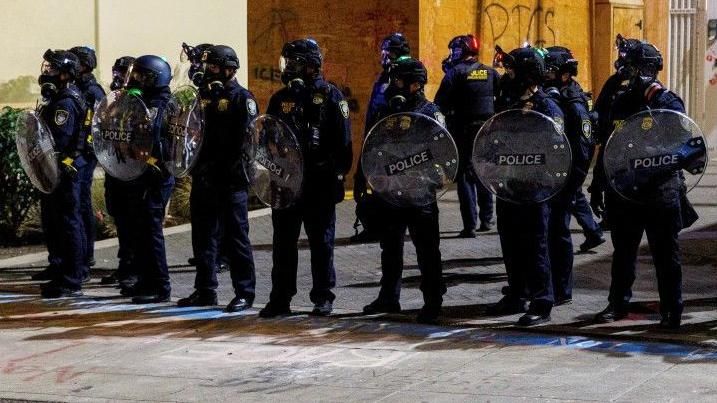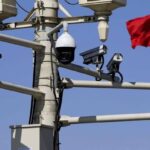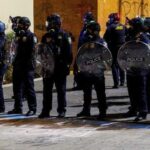President Donald Trump announced Saturday that he has ordered U.S. troops to Portland to protect Immigration and Customs Enforcement facilities, saying he was “authorizing full force, if necessary” to stop what he described as attacks by “domestic terrorists.” The declaration — made on social media and in a flurry of White House statements — prompted sharp criticism from Oregon leaders, renewed protests at ICE sites and questions about the legal and operational scope of the deployment.
Trump framed the move as a response to a series of confrontations around federal immigration offices and what he called escalating threats from extremist protesters. Federal officials signaled they were prepared to send National Guard and other units to bolster security, though details about the size, timeline and rules of engagement for the deployment remained incomplete late Saturday.
Local and state officials pushed back quickly. Oregon Gov. Tina Kotek said in public remarks and during a phone call with the president that Portland is “doing just fine” and warned that a show of force would be unnecessary and harmful. Portland Mayor Keith Wilson issued a blistering statement rejecting the idea that his city required federal troops, calling the order a political stunt and saying the number of “necessary troops is zero.”
Within hours of the White House announcement, protesters gathered at an ICE facility in Portland, and local outlets reported tense confrontations between demonstrators and federal officers. Video from the scene showed at least one physical scuffle; organizers said the demonstrations were intended to oppose both federal immigration actions and the federal presence in the city.
The White House and federal agencies framed the deployment as a limited protection mission for federal property and personnel, but critics criticized both the characterization and the president’s rhetoric. Opponents pointed to declining violent-crime metrics in Portland over recent months and argued that the move echoed past episodes in which federal forces were dispatched to U.S. cities with mixed results and legal controversy.
Legal experts said the contours of any military or National Guard involvement would hinge on who is deployed (federal troops versus state-controlled National Guard), the authority invoked, and the specific mission assigned. Federal troops operating on U.S. soil raise complex constitutional and statutory questions — particularly if they are used in ways that could affect civil liberties or local law-enforcement functions — and officials on both sides signaled they would be watching how the operation is defined.
In Washington, members of Congress from both parties reacted with concern. Some Republicans backed the president’s bid to protect federal personnel; several Democrats condemned the decision as politically motivated and potentially escalatory. Lawmakers called for clarity on what forces would be sent and what legal authorities would govern them.
For Portland residents and activists, the announcement underscored lingering national tensions over immigration policy and federal intervention in cities that have often been at odds with the administration in Washington. Even as federal officials insisted the deployment’s aim was limited, the optics of soldiers and armored vehicles in a city square raised the possibility of further clashes and drew comparisons to earlier confrontations between protesters and federal agents.
As details continue to emerge, key questions remain: when troops will arrive (if they do), what units will be used, which legal authorities will be cited, and whether the presence of federal forces will calm tensions or further inflame them. Local leaders said they would continue to press for non-military solutions and urged the administration to consider sending social services, outreach workers and support for local law enforcement instead of more forces.










